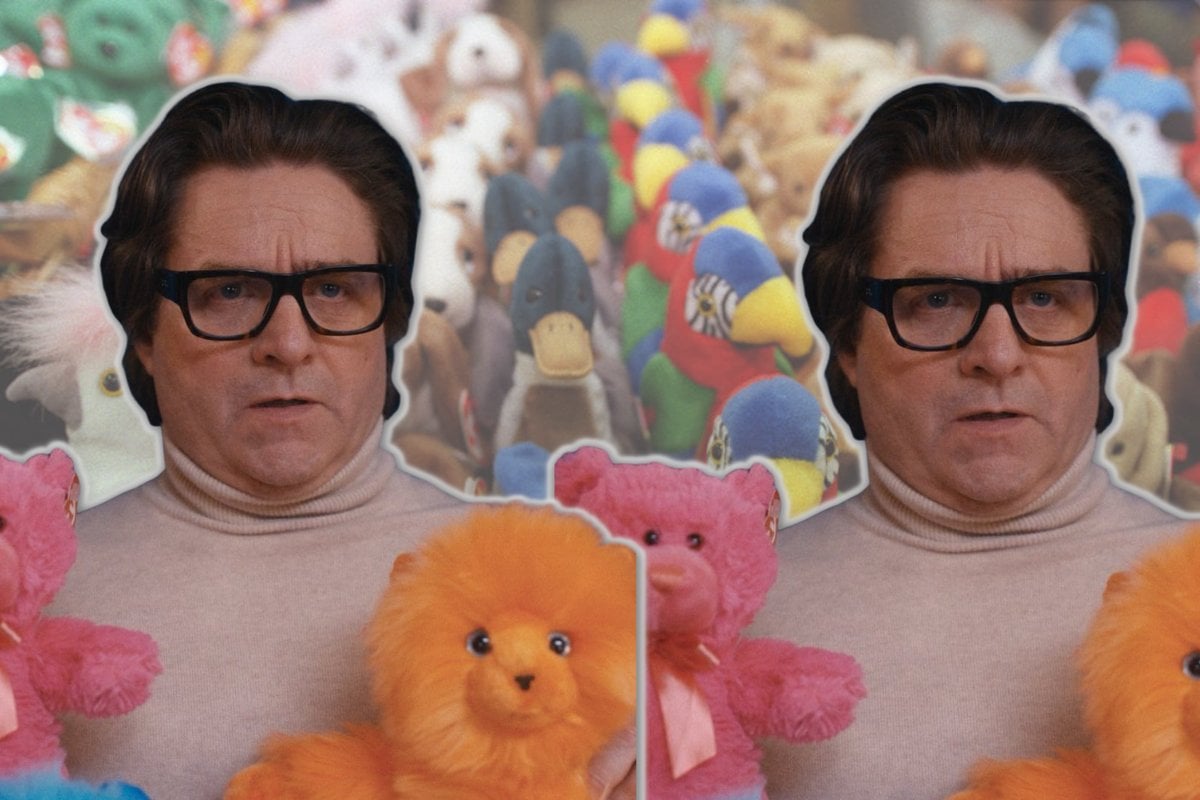
If you didn't own a Ty Beanie Baby in the mid-1990s, where were you?
The rise and fall of the Beanie Baby toy empire, the charismatic founder Ty Warner and the women who worked with him are subjects of the new part-fictionalised Apple TV+ movie The Beanie Bubble.
Starring Zach Galifianakis, Elizabeth Banks and Sarah Snook and directed by Kristin Gore and Damian Kulash, the film was inspired by a 2015 book by Zac Bissonnette, called The Great Beanie Baby Bubble: Mass Delusion and the Dark Side of Cute.
Watch: The Beanie Bubble Trailer on Apple TV +. Post continues below.
I watched the movie as a Beanie Baby fan and proud owner of 'Chipper the Chipmunk' and lapped up all the quirky details about the soft toys and everyone involved in their creation.
The rollercoaster success and ultimate collapse of an adorable brand that for a brief period sent the world into a frenzy. But there were some unknown, darker aspects of this colourful and cute craze that mesmerised a generation.
The rise and fall of the Beanie Baby empire.
According to Digital Spy, Ty Warner started his toy empire in 1986 after he founded Ty Inc. to manufacture and sell a range of colourful plush cats, which were under-stuffed with plastic beans, and therefore much easier to pose and cuddle.
